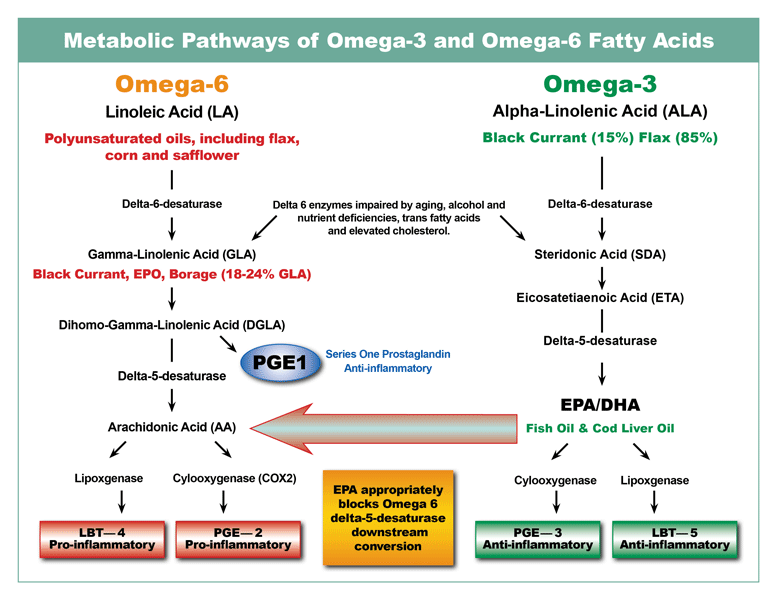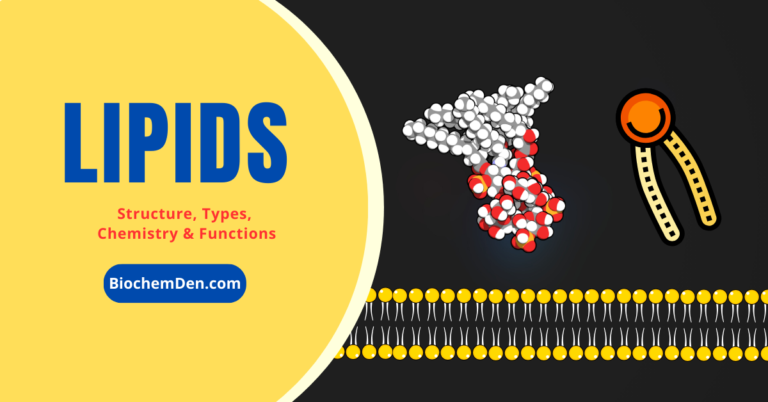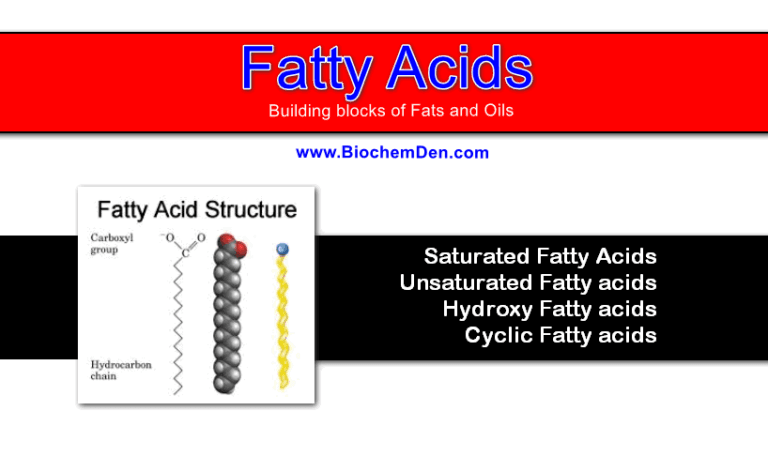The mammalian body is able to synthesize fatty acids from Oleic acid. However, this is not the case with some fatty acids to 34 carbon atoms containing two or more double bonds; they are produced only by bacteria or plants. Mammals cannot, therefore, get their food. They are called essential fatty acids. They are also sometimes called vitamin F (outdated name).

Linoleic acid and linolenic acid are essential fatty acids. They serve as precursors to more fatty acids which are sometimes also called Essential Fatty Acids.
Introduction
Essential fatty acids are not synthesized by the human body fatty acid that must be of this is provided by the diet. There are two families of Essential Fatty Acids: omega-3 fatty acids (n-3) and omega-6 (n-6). Being saturated by hydrogen atoms (H) and containing more than one double bond between atoms, these fatty acids are named polyunsaturated fatty acids (PUFAs). Most of PUFA is their origin in plants and oily fish.
There are three major types of omega-3 fatty acids from ingested food and used by the body:
- alpha-Linolenic acid (ALA) and the polyunsaturated fatty acids to long-chain Eicosapentanoic acid (EPA) and Docosahexanoic acid (DHA).
Once ingested, the body converts ALA to EPA and DHA, the two kinds of omega-3 fatty acids that can be used more easily by the body.

Most of the omega-6 fatty acids are supplied by a diet based on vegetable oils, including linoleic acid (LA). Linoleic acid is converted in the body into polyunsaturated fatty acids long chain, gamma-linolenic acid (GLA) and Arachidonic acid (AA). The AA is also present directly into the meat and GLA in vegetable oils.
- Fatty acids: Building Blocks of Fats and Oils
- Fatty Acid Synthesis: Activation, Steps, and Control
- What are Lipids? What is the Importance of Human Body
Health benefits of Essential Fatty Acids
Adequate intake of polyunsaturated fatty acids (omega-3 and omega-6) is necessary because they play an essential role in
- developing and maintaining good brain function;
- The visual process;
- Immune and inflammatory responses;
- The production of molecules called “hormone-like”.
The European Food Safety Authority (EFSA), which provides scientific advice to assist Policymakers, has confirmed that the dietary intake of omega-3 unsaturated fatty acids (docosahexaenoic and eicosapentaenoic) has proven benefits health by contributing to:
- The maintenance of normal blood pressure;
- To maintain normal blood levels of triglycerides.
Reduction of disease risk
Premature infants:
Docosahexaenoic acid (DHA), omega-3 fatty acid to a long chain, plays an essential role in the Construction of brain membranes and other nervous tissue such as the retina. Moreover, DHA appears also play an important role in the visual and neurological processes.
It has been shown that formula for feeding newborn term containing a ratio of at least 0.3% DHA of total fatty acids, improves visual maturation. Additional studies are needed to clarify the effects of formulas enriched with DHA and the omega-6 fatty acids long chain (Arachidonic acid, AA) on visual acuity or neuro-development premature and term infants.
Pregnancy and lactation:
The mother is the only source of omega-3 fatty acids (eg. Docosahexaenoic acid, DHA) for the fetuses and infants exclusively breastfed, sufficient use during pregnancy and breastfeeding is essential to meet the needs of the infant.
The results of studies to evaluate the effects of long-chain polyunsaturated fatty acids (PUFAs) on the duration of the pregnancy and the physical and mental development of children born to mothers supplemented are mixed. Although some results are promising, it is necessary for more studies to determine the potential benefits of PUFAs.
Heart disease
Studies have shown that a higher intake of omega-3 fatty acids to long-chain (Eicosapentaenoic acid, EPA, and docosahexaenoic acid, DHA) reduces risk factors heart disease, including high blood pressure (hypertension) and a high rate of triglycerides.
Studies done on heart attack victims have shown that daily supplementation the supply of omega-3 fatty acids may reduce the risk of stroke, a new crisis heart, and death.
Cancer
The balance between omega-3 and omega-6 appears to play an important role in the development and expansion of certain types of cancer such as breast, colon, and prostate. While more research is needed to understand the effect that omega-3 fatty acids may have on cancer prevention or treatment, the researchers assume that acid omega-3 in combination with other nutrients (eg. vitamin C, vitamin E, beta-carotene and Coenzyme Q10) can play a major role in the prevention and treatment of breast cancer.
Some studies have shown a slowdown or decline in the progression of colon cancer at the daily consumption of long chain omega-3 fatty acids (eicosapentaenoic acid, EPA and docosahexaenoic acid, DHA).
An animal study on rats with the spread of colon cancer showed that fatty acids omega-3 (particularly alpha-linolenic acid, ALA) in fact favored the growth of cells cancer in the liver. The reason remains equivocal and requires further research.
Epidemiological and clinical studies suggest that omega-3 fatty acids may inhibit the growth of prostate cancer. While one study showed a higher presence of omega-3 alpha-linolenic kind (AAL) in subjects with prostate cancer, thus suggesting that ALA could promote cancer, several studies.
Recent specifically devoted to the study of risk factors for prostate cancer and a systematic review did not report any relationship.
Eye diseases related to aging
A clinical study comparing people with molecular degeneration related to age, illness serious Eye may progress to blindness, healthy people show that people following a healthy and balanced diet in omega-3 and omega-6 and demonstrating a higher consumption of fish were less exposed to this particular disease of the eye.
Another large clinical study confirms that consumption of omega-3 fatty acids long chain (Eicosapentaenoic acid, EPA, and Docosahexaenoic acid, DHA) from fish 4 times week or more, can reduce the risk of developing molecular degeneration. However, this same study suggests that the alpha-linolenic acid (ALA), omega-3 fatty acid to long chain may increase the risk of developing this eye disorder; for a reason that remains unclear.
Alzheimer’s disease
Inadequate intake of long-chain fatty acid (docosahexanoic acid, DHA) can be a risk factor for the development of Alzheimer’s disease and other dementia. However, it remains uncertain whether DHA supplementation can prevent or treat this type of cognitive impairment.
Other Applications
Warning:
Any dietary or drug treatment with high-dose micronutrients should be a medical follow-up.
Heart disease.
Some evidence suggests that omega-3 fatty acids can treat or prevent atherosclerosis by inhibiting the development of plaques and blood clots that clog the arteries.
Diabetes
People with diabetes tend to have high levels of blood fat (triglycerides). Studies have shown that omega-3 content in fish oil may help to reduce the rate of triglycerides. Those with this condition can reap the benefits of consuming food or food supplements containing omega-3 fatty acids long-chain (acid eicosapentanoic, EPA, and docosahexanoic acid, DHA).
It may be that alpha-linolenic acid (ALA), omega-3 long chain, do not offer the same advantages that DHA and EPA because some diabetics cannot convert ALA to a form of omega-3 directly usable by the body.
Small increases in blood sugar fasting patients with type 2 diabetes were observed when taking a high dose of fish oil supplements.
Inflammatory diseases
Many studies have examined the effects of omega-3 fatty acid supplements on diseases inflammatory joint (e.g. rheumatoid arthritis) and concluded that supplements reduce tenderness of the joints and morning stiffness and help reduce the consumption of drugs in people with rheumatoid arthritis.
In addition, some studies suggest that diets rich in omega-3 fatty acids (and low in acid inflammatory omega-6) may also benefit people affected by another disease inflammatory, such as Crohn’s disease and asthma. Study results are mixed and more evidence is needed before we can make any definitive conclusion.
Mental disorders
Omega-3 fatty acids are important components of the membranes of nerve cells. These acids help cells communicate with each other, which is essential to maintaining good health mentally. Docosahexanoic acid (DHA), omega-3 long chain, is involved in a multitude of processes affecting nerve cells.
A clinical study was particularly low omega-3 fatty acid levels of state and a proportion of Omega-6 acids in comparison with omega-3 significantly higher rate in hospitalized patients for depression. A clinical study of depressed people showed that those followed a healthy diet including 2-3 servings of fatty fish per week for 5 years felt a significant reduction in depressive feelings.
A clinical study of people with bipolar disorder has shown that people treated with omega-3 fatty acids, long chain (eicosapentaenoic acid, EPA and acid docosahexanoic, ADH) in addition to their usual mood stabilizer, were less likely to mood changes as well as recurrent manic access than those who received a placebo. However, another study in subjects with bipolar depression could not demonstrate the effectiveness of the use of EPA in these patients.
Early clinical evidence indicates that people with schizophrenia experience a symptom improvement when treated with omega-3 fatty acids. A recent study Based on a rigorous protocol, however, found that supplementation of EPA was not better than placebo in improving symptoms of this disease. These conflicting results show that more research is needed before a conclusion final.
It could be that children with attention deficit disorder/hyperactivity disorder (ADHD) have a low level of certain essential fatty acids (EPA and DHA included). In a clinical study, supplementation with omega-3 fatty acids and omega-6 children with ADHD has noted the progress in reading, spelling, and behavior of children. More studies, including comparisons with drug therapies, are now required to evaluate the results.
According to clinical studies, men and women with anorexia nervosa present a rate polyunsaturated fatty acids lower than the optimal rate (including fatty acid alpha-linolenic acid Omega-3 ALA and gamma-linolenic acid type fatty acid omega-6 long-chain FFA). To prevent complications associated with deficiencies in essential fatty acids, some experts recommend including foods rich in fatty acids such as fish and offal in treatment programs for anorexia nervosa.
Osteoporosis
Studies suggest that Eicosapentanoic acid type of omega-3 fatty acid long chain (AEP) might result in higher levels of calcium in the body, deposition of calcium in the bones and improve bone strength. A study of women aged over 65 years and with osteoporosis showed that patients who are administered based supplements of EPA and gamma-linolenic acid type acid with long chain omega-6 (GLA) showed a period of three years a significant reduction bone loss compared to women taking a placebo.
Weight loss
Clinical studies suggest that overweight people who follow a weight loss program includes exercise tend to better control their blood sugar and cholesterol levels when fish rich in omega-3 (salmon, mackerel or herring) is a staple of their diet low in fat.
Other Disorders
Although further research is needed, it appears that omega-3 fatty acids play also protective against certain infections and can treat a multitude of other conditions such as emphysema, glaucoma, painful menstruation, migraine, multiple sclerosis, lupus, Lyme disease, panic attacks, pre-eclampsia (Pre-eclampsia or preeclampsia (PE) is a disorder of pregnancy characterized by high blood pressure and a large amount of protein in the urine), pre-term delivery (Preterm birth, also known as premature birth, is the birth of a baby at less than 37 weeks gestational age), psoriasis, stress and ulcers.
Recommended intake
European health authorities have established recommendations on dietary fats are poly-unsaturated in adults: to the consumption of omega-3: 2 gram / day of alpha-linolenic acid (ALA) and 250 mg / day acid eicosapentanoic (EPA) and Docosahexanoic of acid (DHA) omega-3 long chain fatty acid; for consumption of omega-6: 10 g / day of linoleic acid (LA).
In the US, adequate intakes for adults were set at 1.6 grams of omega-3 fatty acids (ALA) by day for men and 1.1 g per day for women and 17 grams of omega-6 fatty acids (AL) per day men (aged 19 to 50 years) and 12 g per day for women (aged between 19 and 50 years).
The American Heart Association recommends eating fish (particularly fatty fish such as mackerel, lake trout, herring, sardines, albacore tuna, and salmon) at least 2 times per week.
It is recommended for pregnant women and mothers, nursing mothers, and young children Women who may become pregnant not to eat certain fish such as swordfish, shark, king mackerel which contain higher levels of contaminants (eg. of mercury). He is advised to consume supplements containing polyunsaturated fatty acid.
It is important to keep in our diet balanced omega-3 and omega-6 because these substances work together to maintain our health. Omega-3 fatty acids promote by such as reducing inflammation while on the contrary, most of the omega-6 fatty acids worse. An imbalance between these essential fatty acids led to the development of disease while that balance helps maintain and even improve health.
A balanced diet should contain 2-4 times more omega-6 fatty acids than omega-3 fatty acids. The typical diet in developed countries (Western diet) contains about 14 to 25 times Omega-6 acids than omega-3 fatty acids and many researchers believe this imbalance is a significant factor in the increase in inflammatory disorders. Conversely, the Cretan diet demonstrated a remarkable balance between omega-3 and omega-6 and many studies have shown that people who follow this type of diet are less at risk of developing heart disease.
Supply Situation
Generally, dietary habits regarding the consumption of omega-6 fatty acids are well beyond the recommendations defined in most European countries. Conversely, those on the consumption of long chain omega-3 fatty acids such as eicosapentaenoic acid (EPA) and docosahexaenoic acid (DHA) are well below the authorities recommendations national.
In the United States, while a healthy diet should contain 2-4 times more omega-6 than Omega-3, the American diet (western) typically contains 14 to 25 times more omega-6 than Omega-3.
Deficiency
Deficiencies of essential fatty acids appear in patients with low absorption chronic dietary fat, patients fed intravenously and patients with cystic fibrosis.
The last three months of pregnancy are a critical period for the accumulation of acid docosahexanoic (DHA) fatty acid family of omega-3 in the brain and retina. It is estimated and premature infants are particularly vulnerable to the adverse effects of a deficiency DHA. This is why it has been proposed that preterm infant formulas are supplemented with enough DHA to bring blood and cellular DHA levels of infants fed formula at the same rate as that of breastfed infants.
Symptoms of a deficiency in omega-3 fatty acids include extreme fatigue, impaired memory, dry skin, heart problems, mood changes or depression and poor circulation.
Infants who have not received enough fatty acids from their mothers during pregnancy (especially Essential Fatty Acids) are at risk develop visual and nervous problems.
Sources
The omega-3 fatty acid found in fish such as salmon, tuna, halibut and other species such as marine algae, krill, and walnut oil. The omega-6 fatty acid is in turn contained in vegetable oils such as soybean oil, of safflower, corn oil, nuts, seeds, and – in small amounts – in meat, poultry and eggs. Dietary supplement containing omega-3 (based on fish oils and algae) and Omega-6 (based on borage oil, black currant or evening primrose) are also available.
Security
Toxicity of omega-3 fatty acids
The high doses of omega-3 should be used with caution in people who bruise (A bruise (layman’s term), also called a contusion (medical term), is a type of hematoma of tissue)easily, have circulatory disorders or taking anticoagulants. In Indeed, an excessive amount of omega-3 acids can cause bleeding. Fish oil can cause flatulence, bloating, and diarrhea references. At a high consumption of supplements based on fish oil, an increase in the rate of fasting blood sugar is sometimes seen in people with type 2 diabetes monitoring by a health care professional is recommended.
Studies have shown that some omega-3 fatty acids may reduce the risk of developing macular degeneration. Other studies suggest instead that the consumption of large amounts of ALA may increase the risk of developing such a disorder. These studies are inconclusive, it is necessary to conduct further research to assess the possible risk.
Some studies have shown that omega-3 fatty acids may reduce the risk of developing certain cancers. The analysis suggested the contrary, that the consumption of large amounts of ALA could increase the risk of developing prostate cancer. Recent studies and methodical report, however, have not found such a link.
Fish (and fish oil supplements based) can contain harmful contaminants such as heavy metals (including mercury), dioxins and polychlorinated biphenyls (PCBs). An exhibition excessive to these toxic substances can cause brain damage or kidney damage. Fetuses (an unborn or unhatched offspring of a mammal), Infants and young children are particularly vulnerable to the toxic effects of mercury on the brain. In order to limit the exposure of these groups to mercury, health authorities recommend
Women who may become pregnant, pregnant women and nursing mothers do not consume fish that contain high levels of mercury (eg. shark, swordfish, mackerel royal or golden snapper) but to consume preferably fish with lower mercury content (Eg. Tuna, shrimp, salmon, sea bass and hake).
Toxicity of omega-6 fatty acids
People with seizure disorders should not eat omega-6 fatty acids because according to some reports, these supplements (e.g. evening primrose oil) cause seizures. Borage oil, and possibly other sources of gamma-linolenic acid (GLA), should not be consumed during pregnancy as they can be harmful to the fetus and cause premature birth.
It should avoid consumption of GLA higher in quantities greater than 3000 mg/day. Indeed, this stage, the production of arachidonic acid (AA) increases, which may increase the inflammation. Side effects of evening primrose oil include headache, abdominal pain, nausea, and loose stools. Animal studies have shown that omega-6 fatty acids (linoleic acid and arachidonic acid), such that the fat contained in corn oil, favoring the development of tumor cells prostate. More research is needed to evaluate the effects on the development of cancer in humans.
Drug Interactions
Because of the risk of drug interactions, you should consult a physician prior to taking dietary supplements.
Nutrient interactions
It has been suggested that the amount of vitamin E necessary increases the consumption of acid polyunsaturated fats.
Discover more from Biochemistry Den
Subscribe to get the latest posts sent to your email.


